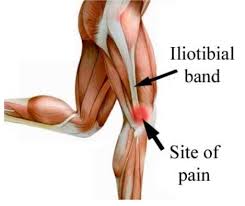Tendonitis, Tendinopathy and Tendinosis are not the same things and knowing the difference will determine your treatment.

The suffix, -itis, means inflammation. Tendinitis is the inflammation of the tendon or the paratenon (the thin layer of tissue covering the tendon) and results in situations where the tendon rubs over a bony surface, or from micro-tears that occur when the musculotendinous unit is acutely overloaded with a tensile force that is too heavy and/or too sudden.
Tendinopathy is the inability of the tendon to adapt to the load quickly enough. Short-timed tendon overload (i.e. when the level of a certain activity, such as weightlifting or running, is increased rapidly) can lead to Reactive Tendinopathy which can be easily reversed if managed optimally. Repeated overloading would lead to Tendon Dysrepair. At this stage, the tendon retains its capacity to reverse to normal, if managed appropriately. If overloading continues long enough, the tendon becomes irreversibly Degenerative. Degenerative tendons have an increased likelihood of rupturing (3).
Experts now recognize that typical tendon injuries are more often caused by long-term overuse that results in deterioration of the tendon (tendinopathy) without any associated inflammation. Tendinopathic symptoms commonly include pain at, or around the affected tendon, which is exacerbated after strenuous activity, morning stiffness which is often perceived as loss of strength in the affected area.
Treatment modalities and timeframe depends on which stage the tendon is at, i.e. Reactive, Dysrepair or Degenerative.

- Reactive Tendinopathy – excellent prognosis
- Normal tissue adaptation
- Tenocyte activation and increased number of proteoglycans
- Tendon Dysrepair – good prognosis
- Tendon breakdown happens faster than body recovery
- Matrix collagen disruption, vascular ingrowth and collagen composition alteration
- Degenerative Tendinopathy – poor prognosis
- Cell death and matrix degeneration
Tendinosis can be categorised as end-stage tendinopathy which is a non-inflammatory histological degeneration of the tendon due to repetitive overloading. Even minor movements, such as typing or using a computer mouse can cause tendinosis when done repeatedly. Treatment for tendinosis recognized at an early stage can be as brief as 6–10 weeks; however, treatment once the tendinosis has become chronic, can take 3–6 months. (2)
It’s important to distinguish between the different types of tendon pathology (tendinitis, tendinopathy and tendinosis) as treatment goals and timelines differ.
If you are having tendon symptoms professional assessment is advised in order to direct you towards the most effective treatment and identify factors that may predispose the current state of your tendon
See also:
- Part II: Approach to tendon treatment
- Part III: Taking care of your Tendons
- Running Related Injuries (RRI’s)
- Ankle Injuries
References:
- http://www.nhs.uk/Conditions/tendonitis/Pages/symptoms.aspx
- Khan KM, Cook JL, Taunton JE, et al. Overuse tendinosis, not tendinitis—Part 1: A new paradigm for a difficult clinical problem. 2000 28(5)
- Cook JL, Purdam CR. Is tendon pathology a continuum? A pathology model to explain the clinical presentation of load-induced tendinopathy. Br J Sports Med.2009 Jun;43(6):409-16.



